Tasks come from every direction—your boss CC’ing you on an email, a coworker asking for feedback on a report, or even your cat jumping on your lap meowing to be fed.
It’s easy to feel overwhelmed by the sheer quantity of what you need to do.
Forgetting something important like a key detail can be problematic. It can lead to missed deadlines and unhappy clients (and cats).
That’s where a to-do list comes in.
Keeping a great to-do list helps you organize, prioritize your tasks, and plan out projects. Chances are you’ve made a list to help with things like grocery shopping, planning a backyard BBQ, or maybe the tasks you must complete at work today.
But how can you create an effective to-do list that helps you get more work done?
What is a to-do list?
A to do list is a list of tasks that contains everything you need to complete. It ensures you have everything written down in one place so you don’t forget anything important.
These lists don’t have to be that complicated. You can use a Post-It note or even a piece of scrap paper to write down your tasks.
Business examples can include writing a report, booking flights for a work trip, following up with a lead, etc.
To-do lists tend to be very personal, as each of us has our own way of making them and how we list out priorities. A famous example is this to-do list from singer Johnny Cash:
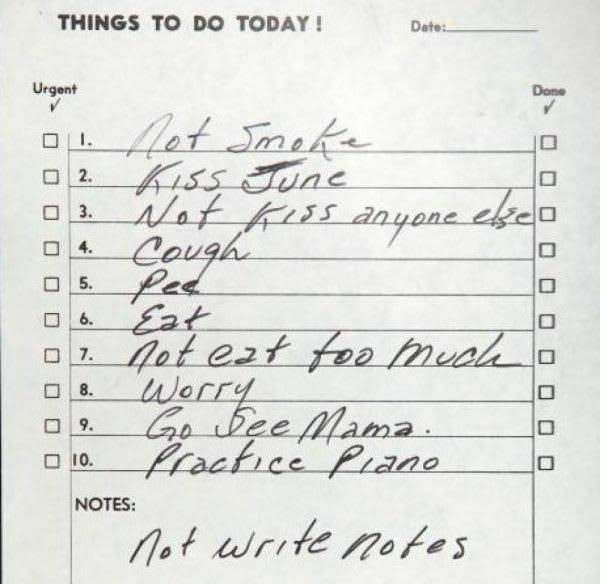
There’s really nothing particularly special about this list, but it ended up selling at auction for $6,250 in 2010!
More modern solutions include using a to-do list or note taking app like monday.com—enabling whole teams to manage personal tasks and work items. These task management software also come with collaboration features that allow you to see what the team tasks are, give notes, and assign responsibilities.
Here’s an example of how remote teams use monday.com to manage their work:

Now let’s look at why it’s important to create a to-do list.
What are the benefits of a to-do list?
So why does creating a to-do list matter and why should it be more of a priority?
The short answer is that a good to-do list increases your productivity.
Without a plan to manage your work, you’ll end up reacting to tasks that others put on your plate. This can leave you feeling overwhelmed and drained as it means you’ll have to shift your schedule around to get to your own work.
Creating a to-do list can prevent that from happening. It lets you set your priorities ahead of time, so you can get to your daily tasks first.
Here are a few other benefits of creating to-do lists.
Organizes your work
Our working or short-term memory is extremely limited. As far back as 1956, psychologists found that the average person can hold just 7 items (plus or minus 2) in their head at a time.
Trying to remember all your daily tasks and details for each just isn’t feasible. It only makes you more likely to forget or mix important details up (“I thought that was due next week!”).
The most important reason for creating a to-do list is it helps you organize and keep track of the things you need to get done.
Instead of wondering, “What do I need to do today?” You can simply look at your list of unfinished tasks and see a clear outline of what you need to do.
Keeps you focused
Multitasking or switching between tasks just doesn’t work. While it may seem like you’re getting more work done, studies show that multitasking has a negative impact on productivity.
Multitasking means that your attention is divided and you’re not fully focused on a task. A study from researchers at the University of California, Irvine found that interrupted work leads to more stress and higher frustration.
The other bad news is it takes an average of 23 minutes and 15 seconds to return to a task after getting interrupted. Those small distractions can add up over the course of a workday.
Keeping a to-do list can help you stay focused on a task and establish flow—the feeling of being fully immersed in your work.
Helps you prioritize
Time is your most valuable asset. But distractions like incoming emails and notifications take you away from productive work.
Keeping a to-do list can help you prioritize your work for the day. This enables you to spend your time on the most important task instead of wasting it away. And if something comes up, you can put them in separate lists and reschedule them for later.
Increases motivation
It’s easy to get frustrated when you have a big project. Crossing off an item in your to-do list can give you a sense of accomplishment and motivate you to keep going for work.
By doing so, you’re tapping into your body’s most powerful motivator — dopamine. Finishing even a small task on your to-do list is itself a reward. Checking off items releases a small amount of dopamine, which can motivate you to push through to the next task.
Reduces mental strain
Have you ever stopped a task halfway through, but found yourself ruminating about it throughout the day?
That’s the Zeigarnik Effect—the concept that we remember incomplete tasks better than completed tasks.
In other words, adding tasks that are unfinished lingers on your mind, which can reduce your focus in other areas.
Keeping a to-do list essentially allows you to do a “brain dump,” which helps keep stuff off your mind and on the page.
How to create a to-do list
There’s a lot more to creating a to-do list than simply writing down what you need to do for the day. While that can certainly work, you’ll be much more productive when you take a systematic approach.
Follow these steps to create an effective to-do list.
#1. Pick a medium
Using a pen and paper is an easy way to get started, but there are also a number of downsides to consider—you can’t easily organize your work, set notifications for recurring tasks, or assign tasks to your team members.
This isn’t to say that you should immediately toss out your notebooks. There will always be a place for paper lists. But when you need a clear overview of everything that’s going on, then opting for a software solution is the way to go.
Using a productivity app for your to do lists lets you quickly capture and prioritize your tasks, so they stay top of mind. They also include tons of other features that you just can’t do with a pen and paper.
Here’s an example of how teams use monday.com to manage their tasks and the built-in collaboration feature to communicate:
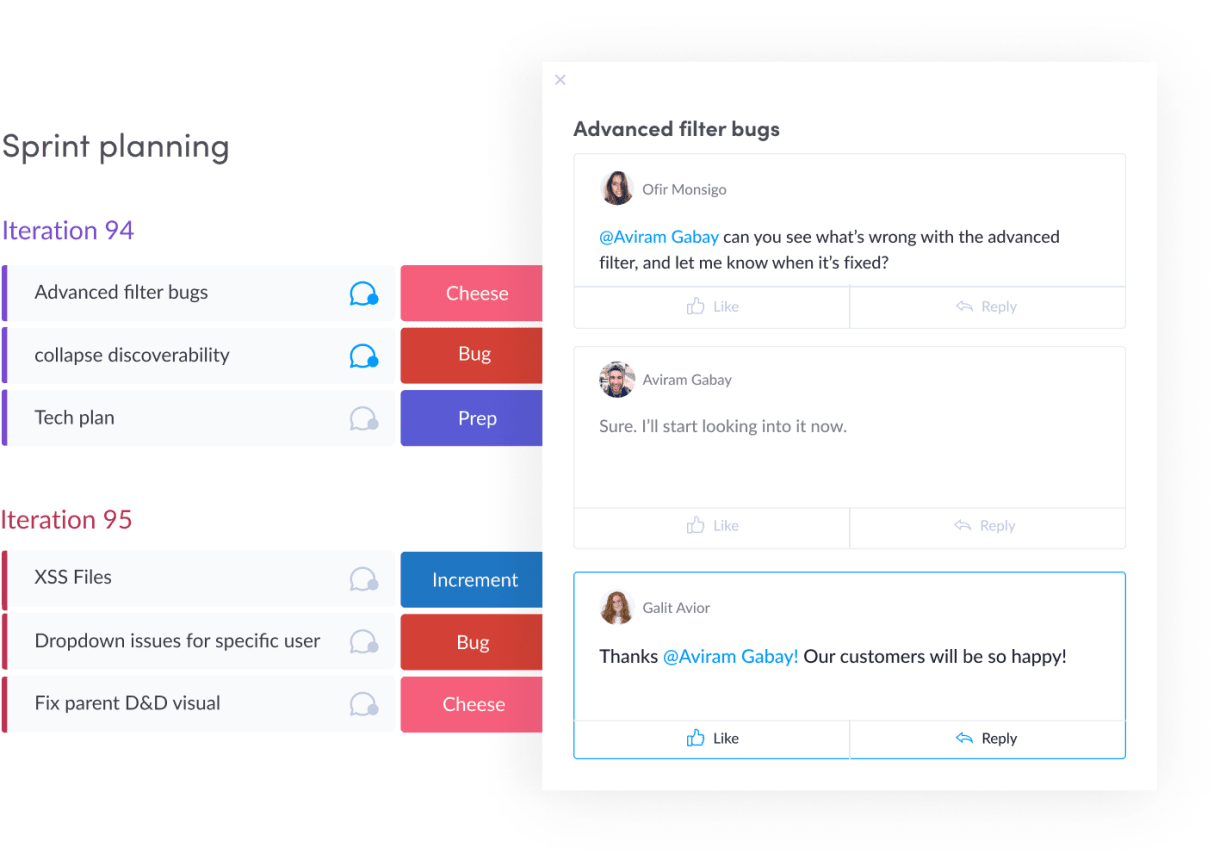
There’s no wrong answer here as it ultimately comes down to personal preference. Some people prefer a pen and paper, while others depend on their productivity app of choice for everything.
Choose a medium that works for you and stick with it.
#2. List out all the tasks you need to do
Staying on top of personal tasks and work items isn’t easy. Organize your tasks by creating a master list—a to-do list that contains everything you need to complete (e.g., pick up the dry-cleaning, work on that presentation, prepare the sales report, etc.)
Jot down all your tasks in your medium of choice. Each of the to-dos on your list should be specific and actionable.
For example, simply writing “Outline” doesn’t really tell you much. It’s too vague. Try to write something like “Draft a blog post outline on X topic” instead.
#3. Organize your tasks by priority
Look through your list and assign each a rating. If you’re using a notebook, write down a number next to each list item from 1 to 5 with 1 being high priority and 5 being low priority.
In monday.com, you can also add High, Medium, and Low labels to your to-do items to indicate their priority. These labels are also color-coded, so you can scan your board and quickly identify what you need to focus on now.
Here’s an example of how you can use color-coded labels to prioritize items in monday.com:
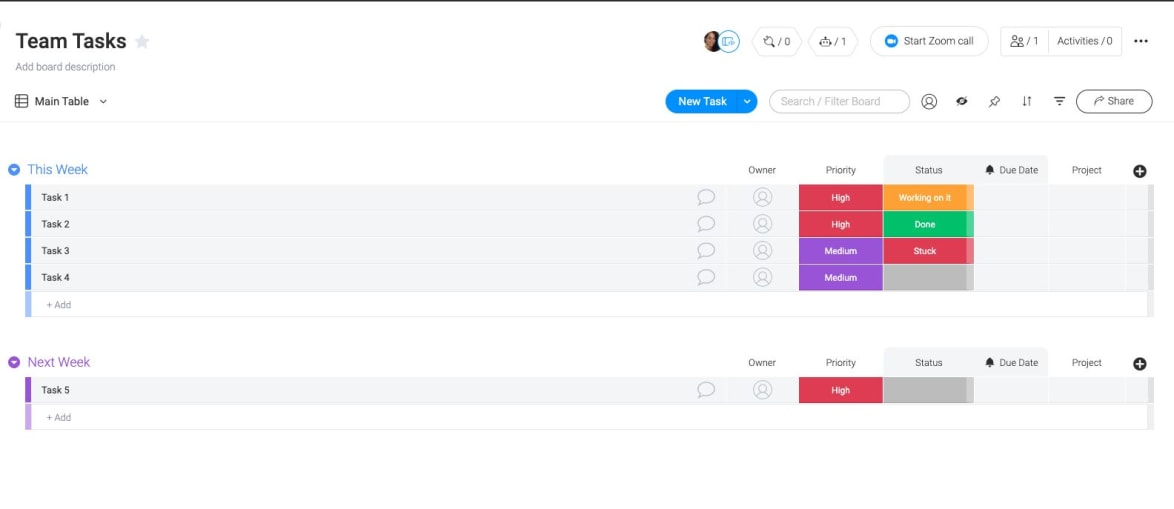
#4. Remove low-value tasks
The value of writing a to-do list is it can help you identify low to no value tasks that aren’t the best use of your time. These items can even be a source of stress and anxiety knowing you might not have the time to get to them.Delegate or remove these tasks from your to-do list altogether. This will help you keep your most important tasks top of mind and avoid getting distracted.
And if you can’t bring yourself to delete something, you can create a board called “Someday” in monday.com and drop tasks in there that you can revisit at any time.
#5. Break down large tasks into smaller steps
Finishing what you need to do for the day seems like a tall order. You might even put off a task simply because you feel overwhelmed.
Break down seemingly large tasks into smaller, more manageable steps. For example, if one of your tasks is “create an editorial calendar,” you might break that down into smaller tasks like:
- Conduct keyword research
- Brainstorm article topics
- Decide on content types
- Meet with the content team
- Choose publication channels
It’s easy to feel overwhelmed when looking at your to-do list. But breaking down a large task into smaller subtasks like in the example above makes your work more manageable.
#6. Add deadlines
Work expands to fill the time available.
Parkinson’s law is something you might be familiar with. For example, if you know you have a few weeks to write a report, you’ll likely take your time on it.
But if your boss says the report is due by the end of the day, you’ll do everything in your power to get it done even if it means taking a shorter lunch (or skipping it altogether).
Here’s an example of how you can set deadlines and due date reminders in monday.com:
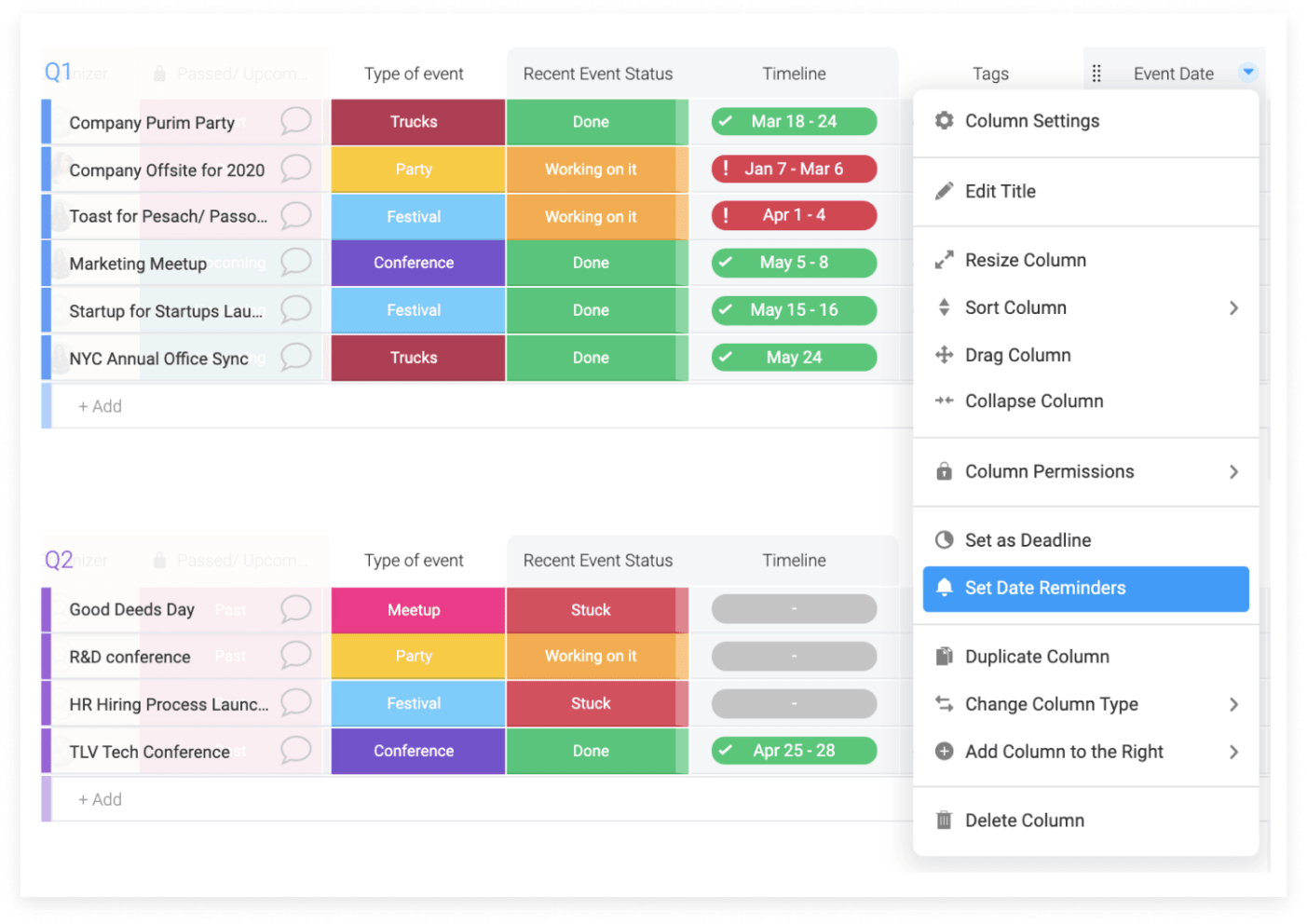
Setting deadlines not only keeps your projects on the right track, but also stops you from procrastinating. You can even have monday.com send you a push notification directly to your iOS or Android device.
At this point, you should have a to-do list with details on what you need to do. Unfortunately, those tasks aren’t going to do themselves.
Let’s look at how you can tackle your work.
How do you manage a to-do list?
It’s easy to get sidetracked and lose an entire afternoon browsing Facebook or watching videos on YouTube.
Here are some productivity methods to help you manage your list and get work done.
Getting Things Done
Getting Things Done (GTD) is a task management system for organizing your tasks. There are 5 basic steps:
- Capture: Capture all items and put them into an inbox.
- Clarify: Turn those items into clear and actionable steps.
- Organize: Organize your tasks to where they belong.
- Reflect: Frequently review and revise your to-do lists
- Engage: Get to work on your important tasks.
This productivity method offers a simple way to get distracting thoughts out of your head and focus your attention to where it matters most.
Learn more about how to GTD with monday.com here.
Eat That Frog
Mark Twain said, “Eat a live frog first thing in the morning and nothing worse will happen to you the rest of the day.”
Not an actual frog, of course. Eat That Frog is a metaphor for tackling your Most Important Task (MIT) first thing in the morning. It’s the equivalent of being the first to volunteer for a presentation to get it out of the way.
Ivy Lee method
Write down just 6 of the most important things you need to accomplish the next day. Then prioritize them in order of importance. Focus on the first task until it’s finished and then move on to the next one.
The Ivy Lee method may sound simplistic, but don’t be quick to dismiss it. Charles M. Schwab was so happy with the results that he wrote a $25,000 check in 1918 to Lee, which is worth well over $400,000 today.
1-3-5 rule
Write down 1 big task, 3 medium tasks, and 5 small tasks. Start with the big tasks first and work your way through the others.
Kanban boards
A Kanban board helps you visualize your workflow and track a project across different stages. A board consists of columns and cards that you can move around.
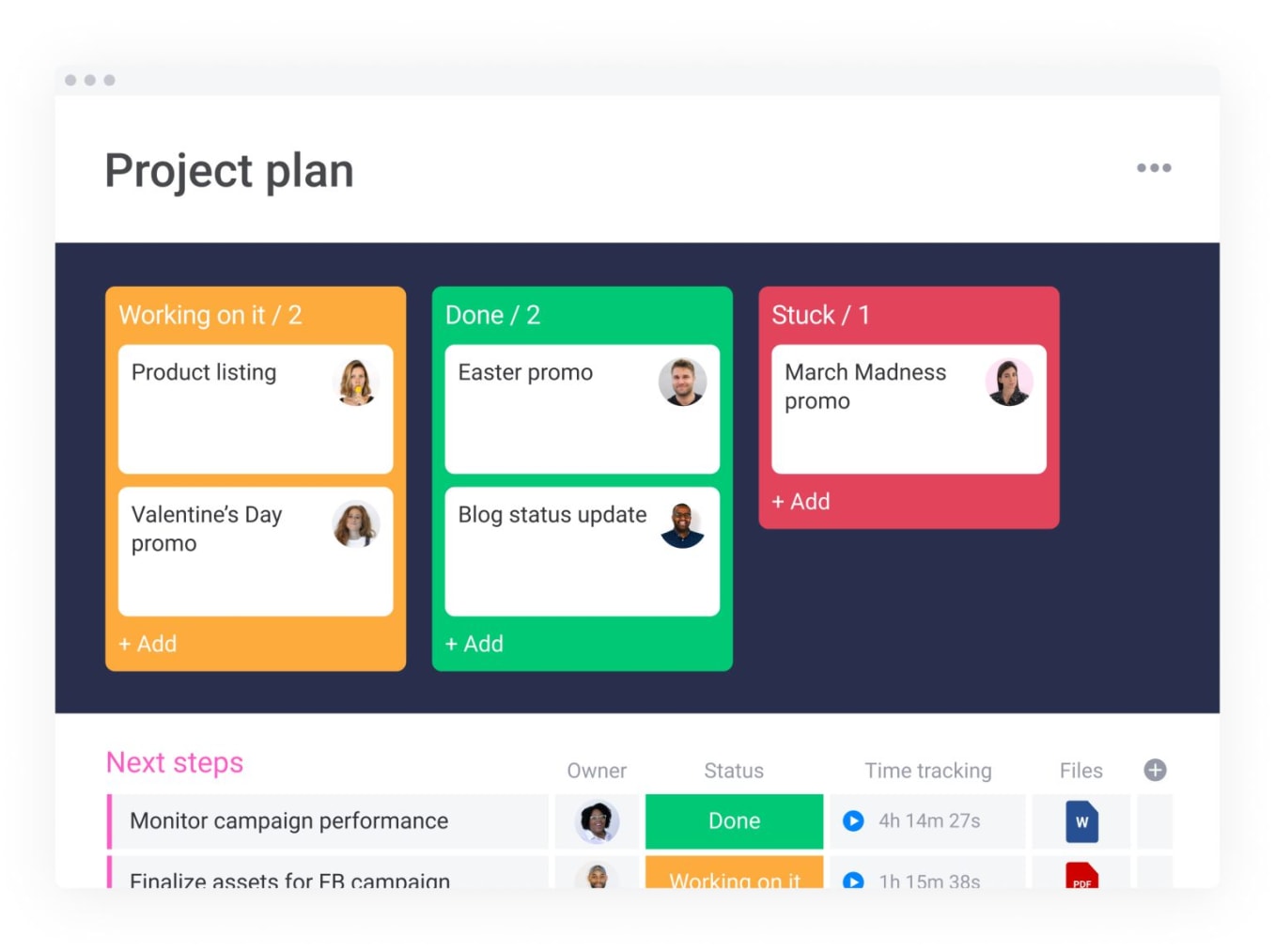
With a Kanban board, you can quickly see where things stand at a glance and organize your entire workflow in one place.
Time blocking
Time blocking or time batching is a time management method where you block off a period of time in your calendar to focus solely on one task.
It’s the productivity method that Cal Newport, a Computer Science professor at Georgetown University, relies on for “deep work” or working without distractions.
Here’s what it looks like from Cal (though I have to admit I have no idea what’s going on in this picture):
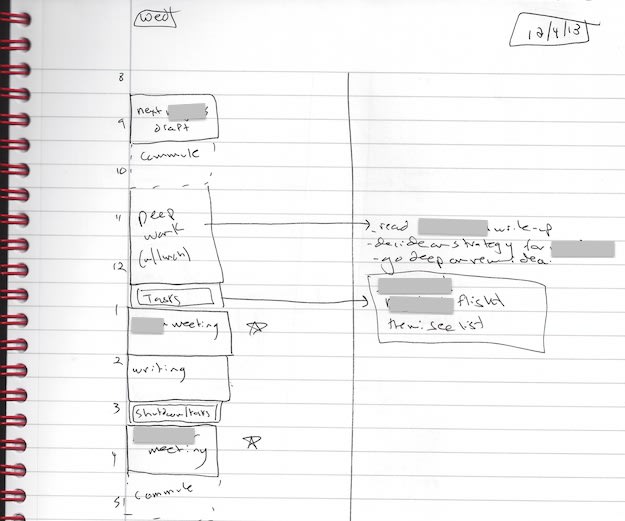
Pomodoro Technique
The Pomodoro Technique is straightforward—set a 25-minute timer and focus on a task from your to-do list. Then take a 5-minute break and start the 25-minute timer again. Rinse and repeat until you’ve crossed off a task from your list.
There’s no single best way to manage your to-do list. Experiment with different systems and choose one that works for you.
How monday.com helps you manage your to-do list
But if you want to quickly capture tasks, set reminders, and collaborate on action items from one place, then you need a more robust solution.
monday.com is a versatile platform that helps you stay on top of your to do’s. The interface is highly customizable, so you can adapt it to fit your existing workflow.
Get started with your to-do list
At some point, we’ve all ended up with an endless number of things to do. It’s easy to forget key details unless you have a system in place to capture and organize those tasks.
Use monday.com’s Daily Task Tracker template to help you create and manage your to-do list from one place. The temple is fully customizable—add new columns, customize your labels, and even integrate with your favorite apps.
Try our platform now, the first two weeks are on us!

